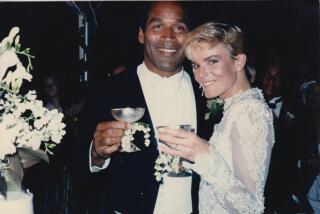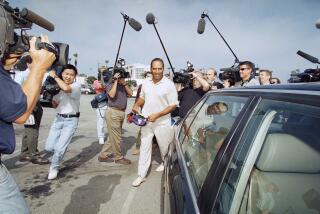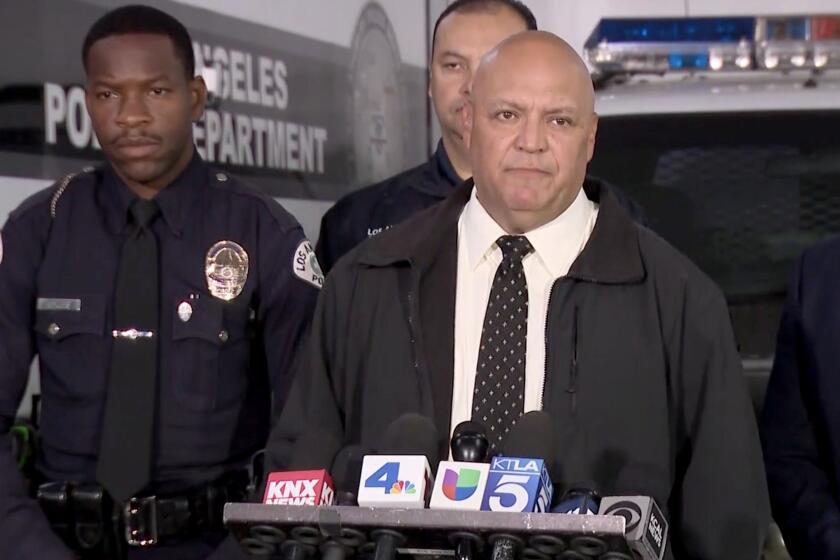‘Man in the Window’: How the arrest resurrected a nightmare for victims
When she began investigating the trail of the Golden State Killer last year, Times reporter Paige St. John quickly realized there was a thread that had nothing to do with the rapes and killings themselves.
In interviews with women who’d been attacked, St. John found a striking lapse in how authorities treated victims of rape in the 1970s. This became a key finding of her “Man in the Window” series and podcast.
What follows is an edited question-and-answer session she conducted with Laura Beil, the host of “Dr. Death,” a podcast created by Wondery, the West Hollywood studio that worked with The Times to produce “Man in the Window.”
=-=-=-=
Beil: This series is about so much more than the gruesome tale of the Golden State Killer for me as a listener. The real shock was how rape was viewed in the ’70s and ’80s. I got the sense that it was barely a crime, which to me was jaw-dropping.
St. John: I had the same reaction when I began reporting. The material I was coming across about rape at the time — the experiences of the women — gave no attention at all to the trauma and the pain that the victims went through. How we could not even consider in California rape as a bodily harm? That property crimes had tougher sentences. So it became very important to put people back into that place.
Beil: I was wondering, how do you delve into such an awful subject as rape without also exploiting the pain of these women?
St. John: It took a lot of time. In all of these cases I’ve been working with these women for a year now. I wanted to make sure that they understood that it’s my intent to show that this does not define who they are. That I’m interested in who they are as people and that they’re not cardboard silhouettes. The arrest of Joseph DeAngelo was very traumatic for these women. It resurfaced all of the trauma. For them it was like the morning after. Immediately the panic attacks, the nightmares, were back upon them.
Beil: We would expect that these women upon hearing that there’s an arrest would think, “Oh, now there’s justice, there’s closure.” But you’re saying that’s not what happened.
St. John: Exactly the opposite. For them the nightmare now has been resurrected. I [had] them check in with their therapists and counselors about talking to me, looking for the red flags for when it gets too traumatic. It’s very important that you give victims of sexual assault control over their story, because the thing taken away from them in a rape is that control.
Beil: What do you hope comes out of this project and and telling of this story?
St. John: What I’m really trying to do is create a place where conversations can be had. Not just the women who were interviewed, but the women — and the men — who were listening to the podcast, [so] they can turn to their mothers, wives, daughters, sons, husbands and talk about this.
I began to have a conversation with my mother. [She] was raped in the ’70s. I saw how she was treated by her parents, saw the stigma she went through, saw the difficulties she had when she filed criminal charges and took that case to court. How do you even approach a woman who’s 87 to begin the conversation of rape? I’m learning that I need to listen. She may not be ready herself to talk, but I’m leaving that door open that I’m ready to listen if she does.
She doesn’t hide her rape — is comfortable letting me tell the world it happened — but until I did this podcast I never heard her talk about how it made her feel.
I had other people come forward during this project to say “me too.” Bonnie, who was the fiancee of Joseph DeAngelo, told me she feels it’s very important that other women — especially the women who were raped by the East Area Rapist — know that she herself was raped later in life and went through the same things.
Here’s what she wrote me recently about why she wants to discuss her rape: “I think it’s empathy — personal knowledge of the shock, humiliation, pain, secrecy, unearned shame (at first), and finally acceptance of the experience we never consented to having in our lives. ... A sisterhood I never thought I’d join.”
Bonnie’s rape was in 2005. She was attacked, raped and beaten by a stranger while in Rome returning to her apartment from a soccer match. She had no idea where to go, was unable to speak enough Italian to seek help. She wound up riding two public buses to get to a hospital — during a national medical strike no less — and found herself among a large crowd waiting to get into the emergency ward.
She had broken ribs, a busted face, large hunks of her hair ripped out. She reported her attack to police in Rome. But Bonnie did not call her husband back in the States to tell him what had happened… waiting to deliver the news until after she returned to the U.S.
This is not the first time I’ve heard this sort of reaction.
Beil: The series is very explicit. How did you make the decision about the language?
St. John: This part of the case was one of the things that jumped out at me ... the number of times that in a police report about an East Area Rapist attack I would find the word “gentle.” We’re talking about a man who held a gun at people’s heads or a knife to the throat, who sexually assaulted women eight times, in just incredibly brutal attacks. And yet police used the word gentle.
I went to the detectives who handled the case at the time, including Carol Daly, who took the narratives from most of the female victims who’d been raped.
Carol’s response to me was that we don’t have a language for rape. We talk about it so little. Even today that we lack the words. They didn’t say in the newspapers at the time how many times these women were sexually assaulted. They never used the word sodomy. They never used the word masturbation. They never spoke about what actually happened in those bedrooms or living rooms to these women.
The word “gentle” actually appears in four of the rape reports written by officers at the time. In all cases, the victim’s husband or boyfriend was also in the house, bound up and threatened with death or the death of their children. In almost all of these cases the rapist was sobbing — one woman told police he cried: “I’m sorry Mommy. Mommy please help me….” — but he sodomized and raped these women repeatedly.
Beil: You do wonder how explicit to be, so someone who is experiencing that or relapsing doesn’t get triggered by it.
St. John: I know this is a difficult question. I definitely stay away from anything I think is voyeuristic [or] in any way exploits this. [But I wanted to make sure] that people understand the horror and brutality of what the women endured.
Beil: One of the things that the project notes is that there were actually other serial rapists at the time. They didn’t get public attention like the East Area Rapist, but they attacked as many or more women. Why is that?
St. John: There were like six serial rapists active in Sacramento at the time as the East Area Rapist. One of them, the Early Bird, raped 42 women with barely a mention in the news.
These women were being attacked in poor neighborhoods. They were people of color or they were women who were living alone in apartments. So there’s a suggestion that they invited their attack somehow or that they lived riskier lives. When a rapist takes up in a middle-class, largely white suburb is the moment that everybody becomes hysterical.
I also saw a lot of political interest in covering up these crimes. Lying to the public about what was happening, even making claims that women had left their doors unlocked, as in some way they’re responsible for their attacks. We had sheriffs at that time who were campaigning on the ability to keep neighborhoods safe.
Beil: What do you think has not yet been talked about in this case?
St. John: I think we have left the men out of the picture almost completely. Men were bound with a gun held to their head and forced to listen as their their wife their girlfriend was dragged off into another room to be raped. You know they witnessed and experienced a huge amount of trauma. Yet they were not treated as victims themselves. I’m now beginning to hear from the men about what they went through and how that anger and rage is still inside them.
The individual charged with murder and kidnapping in this case, Joseph DeAngelo, has not yet been tried or entered a plea. He and his lawyers declined to comment.
More to Read
Start your day right
Sign up for Essential California for news, features and recommendations from the L.A. Times and beyond in your inbox six days a week.
You may occasionally receive promotional content from the Los Angeles Times.






